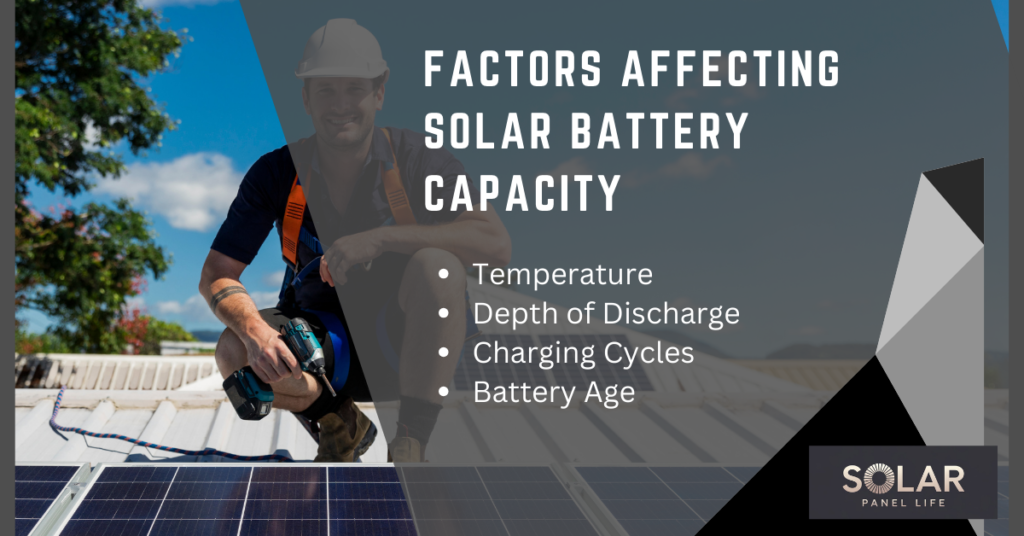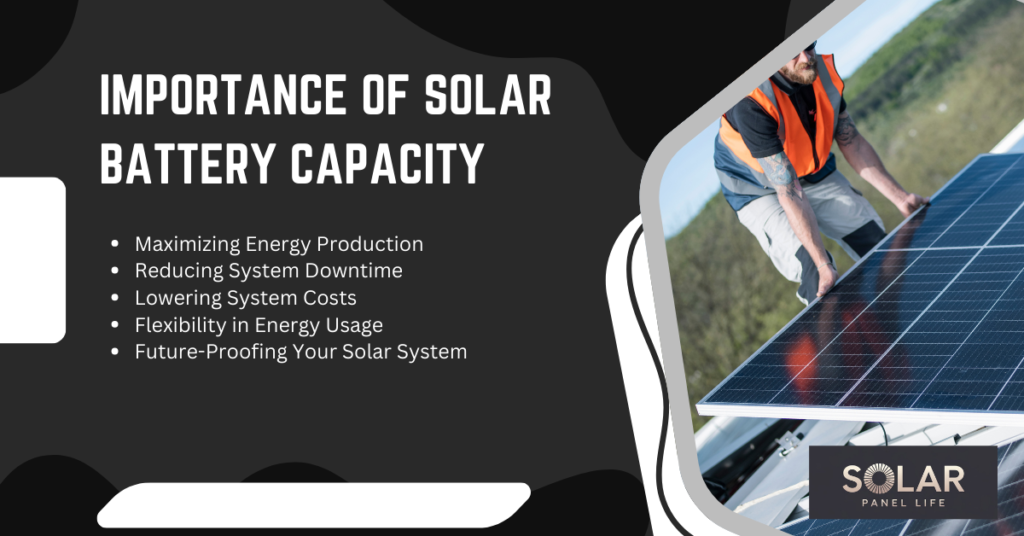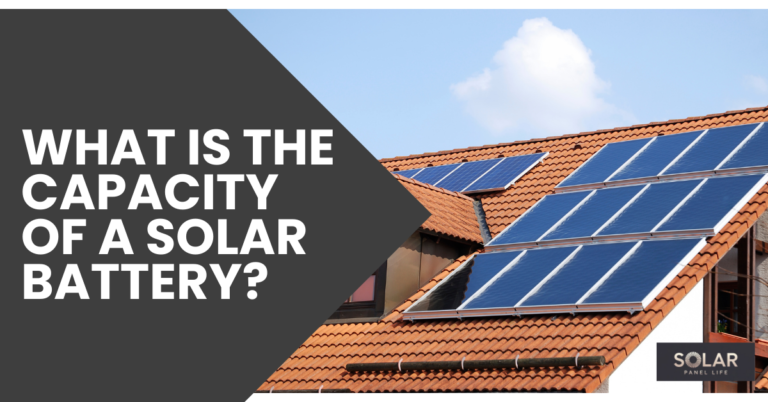With the rising concern for environmental sustainability and the increasing prices of traditional energy sources, more and more people are turning to solar energy as an alternative. One of the key components in a solar energy system is the solar battery, which stores the converted energy from sunlight for later use. But what exactly is the capacity of a solar battery and why is it important? In this article, we will delve into the details of solar battery capacity, its efficiency, and its significance in harnessing solar energy.
Understanding Solar Battery Capacity
In simple terms, the capacity of a solar battery refers to the amount of energy it can store. This is measured in kilowatt-hours (kWh). The higher the capacity, the more energy a solar battery can store and provide for your household needs. Solar batteries come in different capacities, ranging from 1 kWh to over 20 kWh. The size of the capacity you need will depend on your energy consumption and the amount of sunlight available in your area.

Factors Affecting Solar Battery Capacity
Solar batteries are an essential component of a solar energy system. They store the energy generated by solar panels for later use and provide a consistent source of electricity, even when there is no sunlight. However, like any other type of battery, their capacity can be affected by various factors.
In this section, we will discuss the different factors that can affect the capacity of a solar battery and how to mitigate their impact.
1. Temperature
Temperature is one of the most critical factors that can affect the capacity of a solar battery. High temperatures can decrease the efficiency of a battery, leading to lower energy storage and output.
The ideal temperature range for a solar battery is between 25-30 degrees Celsius. Anything above or below this range can have a significant impact on its capacity. High temperatures can cause the battery to overheat, which can damage its internal components and reduce its lifespan.
On the other hand, low temperatures can slow down the chemical reactions within the battery, reducing its performance and capacity. In extreme cases, extremely low temperatures can even freeze the electrolyte solution inside the battery, rendering it unusable.
To mitigate the impact of temperature on solar battery capacity, it is crucial to install the battery in a well-ventilated area that is not exposed to direct sunlight. Additionally, using a cooling system can help maintain the ideal temperature range for the battery.
2. Depth of Discharge
The depth of discharge (DOD) refers to how much energy has been drained from a battery compared to its total capacity. The higher the DOD, the more discharged the battery is.
Generally, it is recommended to keep the depth of discharge below 50% for optimal battery performance and longevity. Discharging a battery beyond this limit can cause irreversible damage to its cells and decrease its overall capacity.
To maintain a healthy depth of discharge, it is essential to monitor the battery’s state of charge and recharge it before it reaches 50%. This can be achieved by using a battery management system that tracks the battery’s energy levels and alerts the user when it is time to recharge.
3. Charging Cycles
A charging cycle refers to the process of fully charging and discharging a solar battery. Every time a battery goes through a charging cycle, its capacity decreases slightly. This decrease is known as the “cycle life” of a battery.
The number of charging cycles a solar battery can undergo before its capacity starts to diminish significantly depends on various factors such as the battery’s quality, temperature, and depth of discharge.
To prolong the cycle life of a solar battery, it is crucial to avoid frequently discharging it completely and to recharge it before it reaches its critical level. This can help maintain a healthy cycle life and ensure the battery’s capacity remains stable over time.
4. Battery Age
As with any other type of battery, the age of a solar battery also plays a significant role in its capacity. As a battery gets older, its performance declines, leading to a decrease in its capacity.
On average, most solar batteries have a lifespan of 5-10 years, depending on their quality and usage. However, with proper maintenance and care, some batteries can last up to 15 years.
To prolong the life of a solar battery and maintain its capacity, it is crucial to follow the manufacturer’s recommendations for maintenance and replace the battery when it reaches the end of its lifespan.
5. Size and Type of Battery
The size and type of a solar battery can also affect its capacity. Larger batteries have a higher capacity and can store more energy, while smaller batteries have a lower capacity.
Additionally, the type of battery used in a solar energy system can also impact its capacity. Some types, such as lead-acid batteries, have a lower capacity and shorter lifespan compared to more advanced options like lithium-ion batteries.
To ensure sufficient energy storage, it is essential to choose the right size and type of battery for your solar energy system. Consulting with a professional can help determine the best battery option based on your specific energy needs and budget.

Importance of Solar Battery Capacity
One of the most important factors to consider when investing in a solar energy system is the capacity of its battery. The battery capacity plays a crucial role in determining the effectiveness and efficiency of your solar system. It not only affects your energy production but also impacts the overall cost and longevity of your system. In this article, we will explore the significance of solar battery capacity and why it should be a top consideration for anyone looking to switch to solar energy.
- Maximizing Energy Production
The battery capacity of your solar system is directly linked to its ability to store and provide energy. The higher the battery capacity, the more energy your system can store and use during periods of low sunlight or at night. This means that a larger battery capacity allows you to maximize your energy production and reduce dependence on the grid. With a higher capacity battery, you can store excess energy generated during peak sunlight hours and use it later when there is not enough sunlight. This not only ensures that you have a steady supply of clean energy but also helps you save money on utility bills.
- Reducing System Downtime
In addition to maximizing energy production, a larger battery capacity can also help reduce system downtime. Solar systems with smaller battery capacities often experience frequent shutdowns due to insufficient storage of electricity. This can be particularly problematic during power outages or extreme weather conditions when the grid is down. With a larger battery capacity, your system will have enough stored energy to keep running even in the event of a blackout or grid failure. This not only ensures uninterrupted power supply but also protects your system from potential damage caused by frequent shutdowns.
- Lowering System Costs
Another important aspect to consider is the cost of your solar system. While it may seem logical to opt for a smaller battery capacity to save money, it can actually end up costing you more in the long run. A larger battery capacity means that your system can store more energy and be less dependent on the grid. This translates to lower utility bills and reduced maintenance costs. Additionally, a larger battery capacity also increases the lifespan of your solar system by reducing its reliance on external sources of energy.
- Flexibility in Energy Usage
One major advantage of having a higher battery capacity is the flexibility it offers in energy usage. With a larger capacity, you can power more appliances and devices in your home without worrying about running out of stored energy. This allows you to fully utilize the potential of your solar system without any limitations. You can even use the excess stored energy to charge electric vehicles or power outdoor lighting, further enhancing the sustainability and control over your energy consumption.
- Future-Proofing Your Solar System
The demand for clean energy is constantly increasing, and technological advancements in the solar industry are constantly evolving. By investing in a larger battery capacity, you future-proof your solar system by allowing it to adapt to any changes or upgrades in the future. This not only ensures that your system remains efficient but also increases its resale value.
- Efficiency of Solar Battery Capacity
The efficiency of a solar battery capacity refers to how much of the energy stored in it can be used. This is measured by the round trip efficiency, which indicates the amount of energy that can be discharged from a fully charged battery and then recharged back into it. For example, a battery with a round trip efficiency of 80% means that for every 100 kWh of energy stored, only 80 kWh can be used. The remaining 20% is lost in the charging and discharging process.
Factors Affecting Solar Battery Efficiency
Solar batteries are the backbone of any solar power system, as they store the energy harnessed from the sun for later use. The efficiency of these batteries plays a crucial role in determining how much of the solar energy can be stored and utilized effectively. Several factors affect the efficiency of solar batteries, which we will discuss in this article.
1. Temperature
Temperature is one of the most significant factors that impact solar battery efficiency. Solar batteries operate best in moderate temperatures, usually between 25 to 30 degrees Celsius. High temperatures can cause a decrease in the battery’s performance, while low temperatures can lead to reduced capacity and slower charging times.
One of the main reasons for this effect is that high temperatures increase the internal resistance of batteries, making them less efficient in storing and distributing energy. Additionally, extreme temperature changes can cause thermal stress on the battery, leading to a shorter overall lifespan.
To counter this issue, some solar battery systems come with built-in cooling mechanisms to regulate the internal temperature and maintain optimal conditions for efficiency.
2. Depth of Discharge
The depth of discharge (DoD) refers to the percentage of energy that is taken out of a battery. The higher the DoD, the more energy is drawn from the battery, leading to a shorter lifespan and reduced efficiency over time.
For example, if you discharge your solar battery by 50%, it means that half of its capacity has been used. Most solar batteries have a maximum recommended DoD of 80%, meaning that you should avoid discharging more than 80% of the battery’s capacity to prolong its lifespan and maintain efficiency.
3. Charge Cycles
A charge cycle refers to the process of charging a battery from empty to full and then back to empty again. The number of charge cycles a solar battery can endure before it starts losing efficiency depends on several factors, such as the battery chemistry and how deeply it is discharged.
For instance, a lithium-ion battery can typically endure around 500 charge cycles before its efficiency begins to decline. On the other hand, lead-acid batteries can handle up to 1,000 charge cycles.
To maximize the lifespan of your solar battery, it’s essential to avoid frequent charging and discharging. Instead, try to maintain a consistent DoD and only charge the battery when necessary.
4. Battery Chemistry
The type of chemistry used in a solar battery has a significant impact on its efficiency and overall performance. The most common types of batteries used in solar power systems are lead-acid, lithium-ion, and saltwater batteries.
Lead-acid batteries are the oldest and most widely used type of battery in solar systems. However, they have a shorter lifespan compared to lithium-ion batteries and require frequent maintenance.
Lithium-ion batteries, on the other hand, are more expensive but come with a longer lifespan and higher efficiency. They also require minimal maintenance, making them a popular choice for residential solar power systems.
Saltwater batteries are relatively new in the market and are known for their longevity, with a lifespan of up to 20 years. They also have a high DoD and can handle extreme temperature changes, making them suitable for areas with harsh weather conditions.
5. Battery Age
As solar batteries age, their efficiency decreases gradually. This decline is mainly due to the natural degradation of the battery’s internal components over time. Factors such as temperature, DoD, and charge cycles can accelerate this process.
To ensure maximum efficiency and longevity of your solar battery, it’s essential to regularly monitor its performance and replace it when necessary. Most solar batteries come with a warranty period that covers any defects or damages for a specific number of years.

